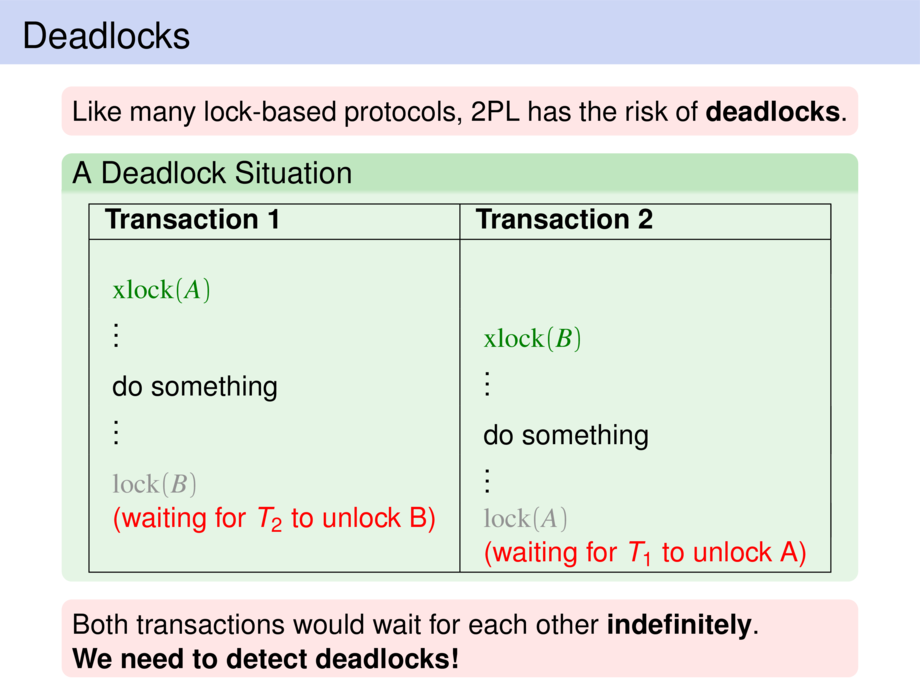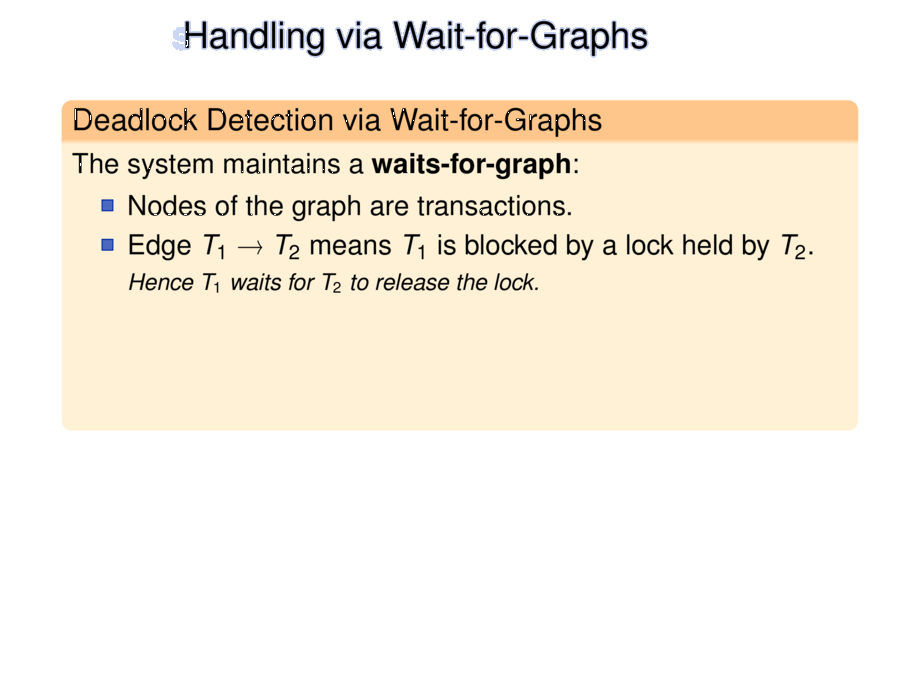



































































































111/212
\begin{frame}
\frametitle{Deadlock Handling via Wait-for-Graphs}
\begin{goal}{Deadlock Detection via Wait-for-Graphs}
The system maintains a \emph{waits-for-graph}:
\begin{itemize}
\item Nodes of the graph are transactions.
\item Edge $T_1 \to T_2$ means $T_1$ is blocked by a lock held by $T_2$.\\
\remark{Hence $T_1$ waits for $T_2$ to release the lock.}
\end{itemize}
\pause\smallskip
The system checks periodically for \emph{cycles} in the graph:
\begin{itemize}
\item If a cycle is detected, then the deadlock is \emph{resolved} by \emph{aborting}
one or more transactions.
\end{itemize}
\end{goal}
\pause\smallskip
\begin{alertblock}{Selecting the \emph{victim} is a challenge}
\begin{itemize}
\item Aborting \emph{young} transactions might lead to starvation.
The same transaction may be cancelled again and again.
\item Aborting \emph{old} transactions may cause a lot of computational investment to be thrown away.
\end{itemize}
\end{alertblock}
\end{frame}

